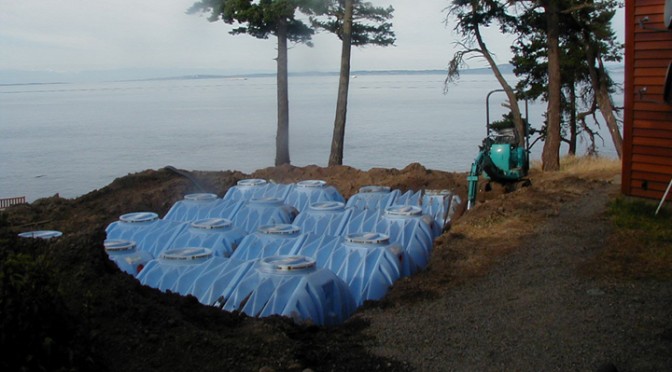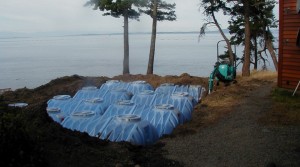 I recently found this guest blog post on ValleyCrest Takes on Water Management. The post was written by Mark Hopkins, a veteran leader in the landscape and irrigation industry. Mark writes about the history of rainwater harvesting and shares some expertise and insight about residential and commercial rainwater collection today.
I recently found this guest blog post on ValleyCrest Takes on Water Management. The post was written by Mark Hopkins, a veteran leader in the landscape and irrigation industry. Mark writes about the history of rainwater harvesting and shares some expertise and insight about residential and commercial rainwater collection today.
Here is an excerpt:
Rainwater harvesting can be traced back over 3000 years. In Jordan, King Mesha of Moab, commanded that all citizens dig cisterns for the collection of rainwater. Failing to comply with those water-saving guidelines probably resulted in more than a fine! In ancient Rome, atrium-fed rainwater collection cisterns were common place and were an important part of the region’s history. [Many of our grandparents had rainfall collection here in America in the 1800s and early 1900s.]
Due to rising costs and water shortages, there is a new buzz towards the age-old practice of rainwater harvesting. In a recent report by the Natural Resources Defense Council eight cities were studied for the potential economic impact of water harvesting. It is estimated the residents of these cities could save over 90 million dollars each year by adopting simple rain collection techniques. The study also finds that rainwater harvesting is not just applicable in residential settings; it can also be used on a commercial basis. Businesses can harvest rainfall from rooftops and parking surfaces with the potential of satisfying 21% to 75% of their annual water needs.
Many states are also getting into the act by providing resources for those individuals and businesses interested in water harvesting. For example, The Texas Water Development Board has created a Rainwater Harvesting Manual which outlines many methods of collection, formulas to estimate system sizing, available rebates and a wealth of other information.
When it comes to water harvesting, the need is now, resources are readily available and cost-saving benefits are measurable. Rainwater harvesting has evolved. [Even with a small amount of storage, those who choose to do the “right thing” can supplement their municipal water usage by an extraordinary 60, 70% and more.]
Click here to read the entire article.
 How can I be sure that the person and company designing and installing my rainwater collection system is qualified?
How can I be sure that the person and company designing and installing my rainwater collection system is qualified? 

 Are you concerned with the aesthetics of above ground water storage? Then underground storage may be right for you.
Are you concerned with the aesthetics of above ground water storage? Then underground storage may be right for you. I recently found this guest blog post on
I recently found this guest blog post on